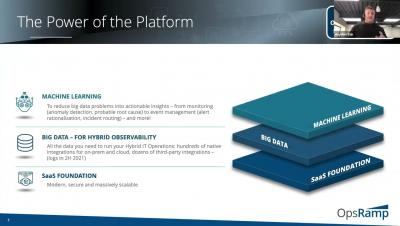Operations | Monitoring | ITSM | DevOps | Cloud
Alerting
OpsRamp for MSPs
Uncovering the Importance of Mean Time Between Failures
In the IT world, application service providers (ASPs) build customer trust by ensuring the continuous, uninterrupted availability of their services and software. Service availability allows customers to operate normally and generate revenue without being directly impacted by their providers’ system failures. Though providers work to ensure system uptime, they are often challenged by unexpected technical issues that impact customer-facing systems.
How to Build an Effective Status Page That Works
In this article, we’re going to explore key reasons why companies need status pages. We’ll also dive into the components of an accurate status page that does its job well. This will make it easier for you to set up your own status page, even if you’ve never done it before.
Why automation is the incident response 'easy button' MSPs & IR firms have been waiting for
The managed security services market is booming. Coming in at $22.8 billion in 2021, it is projected to nearly double in just five years and grow to $43.7 billion by 2026. Moreover, cloud-based managed security services are poised to be the major growth driver for the broader MSP market, coming in at $219.59 billion in 2021, and expected to reach $557.10 billion by 2028. As we can see, providing robust security services is a key competitive differentiator for the lucrative MSP market.
The Power Of The OpsRamp Platform | Hayden Sak | OpsRamp Shorts
Reimagining Retail Incident Response for the Holidays
The holiday season is here, and global retailers are prepared for the biggest retail event of the year. The decrease in new COVID-19 cases, coupled with a rise in vaccination rates, provides a glimmer of hope for shoppers looking to spend for friends and family. Holiday spending is expected to break previous records this year, growing up to 10.5 percent over 2020.
Best Practices to implement in Incident Management
They are like 5 stages of an incident: 1. Assess impact 2. Inform customers (statuspage) 3. Identify the issue 4. Mitigate the issue 5. Resolve the incident Then there’s followup and further work. Also important to note that (2) should be ongoing as you progress. Updating the status page should be done within reasonable periods – e.g. every 15-20 mins unless you specify otherwise.
Introducing Adaptive Alerts: Detect application-level error trends
Adaptive Alerts is a new feature from Rollbar that adds to our reliable, informative and actionable alerts about unexpected issues in monitored applications and services. Adaptive Alerts uses anomaly detection to learn the standard behavior of enterprise applications, and alerts developers about atypical exception rates, reducing unwanted noise.
TL;DR InfluxDB Tech Tips - Visualizing Uptime with Flux deadman() Function in InfluxDB Dashboards
A common DevOps use case involves alerting when hosts stop reporting metrics, aka a deadman alert. This can be done using the monitor.deadman() Flux function. One can easily create a deadman (or threshold) check in the InfluxDB UI Alerts section or craft a custom task to alert as well. Check out InfluxDB’s Checks and Notifications system post for more details. It’s also possible to use the monitor.deadman() function directly in a dashboard cell.










